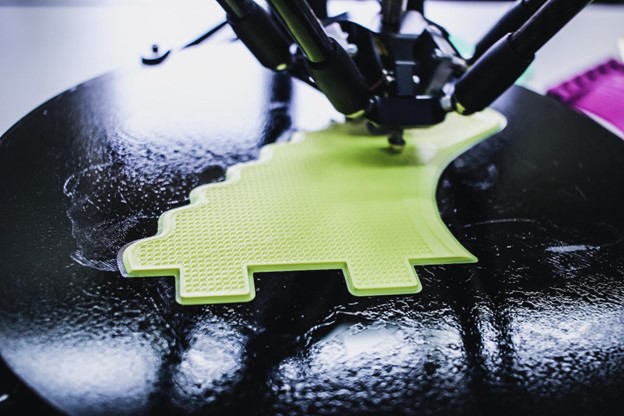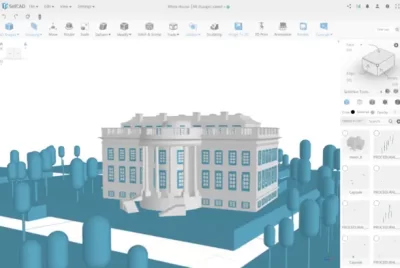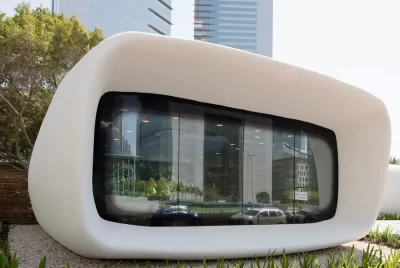Fast 3D Printer: How Does It Work
The innovation of 3D printing has provided an efficient, affordable alternative for DIY enthusiasts and domestic manufacturers. 3D printers make it possible to fabricate virtually anything you can imagine with comparative ease. Instead of depending on elaborate traditional manufacturing methods, current-day production is typically swift and straightforward, involving designing software or locating a suitable one, and just hitting ‘print’.
Printing a 50 mm diameter object with standard 3D printing techniques like Filament Fused Fusion (FFF) or Stereolithography (SLA) can take anywhere from three to eleven hours. When it comes to larger objects, printing could go on for days, even if the 3D printer is operational round the clock.
That’s where fast 3D printers step in, bringing a competitive edge to the table. A number of companies have launched novel 3D printing setup technologies to accelerate the 3D printing process. These advancements primarily work with plastic materials and make use of non-stop printing technologies.
Innovations in Fast 3D Printer Technologies
Digital Light Synthesis (DLS) by Carbon3D
The technology offered by Carbon3D is a chemically-driven process that maintains a balance between light and oxygen to selectively photocure liquid resin.
The working principle involves projecting light through an oxygen-permeable window into a reservoir of UV-curable resin. As the object is formed, the build platform continues to lift, eliminating the need for more time-intensive steps. Control of the oxygen flow results in an uncured resin layer between the window and the object.
This technology enables the object to grow continuously. UV images are projected in a seamless sequence, drawing the object out of the resin tank without any break.
Carbon3D’s technology performs 25 to 100 times faster than alternative 3D printing methods. The resistance of the 3D printed objects, with no layer-to-layer weaknesses, is another advantage of this resin-based 3D printing technology.
Hyper-Speed Animated Printing by Gizmo 3D
Gizmo3D is an Australian company led by Kobus du Toit, manufacturing products that use top-down Digital Light Processing (DLP) 3D printing.
In their range of 3D printers, the projector responsible for curing the resin is positioned above the resin tank. This 3D printing setup prevents suction issues commonly associated with bottom-up 3D printing procedures. The build plate continually descends during the rapid 3D printing process without any pauses.
Multi Jet Fusion (MJF) by HP
In 2014, tech powerhouse Hewlett-Packard unveiled its first 3D printer. The machine utilizes its proprietary Multi Jet Fusion (MJF) technology, pushing the boundaries of possibilities.
The objects printed with this technology are robust, detailed, and quick to print. HP asserts a significant decrease in production time. MJF operates ten times faster than Selective Laser Sintering (SLS).
HP’s Multi Jet Fusion technology is up to 25 times quicker than other 3D printing technologies such as filament extrusion. HP also produces both metal and full-color 3D printers.
Continuous Additive 3D Printing Technology by Carima
Carima is a 3D printing setup manufacturer based in South Korea. They use the ground-breaking C-CAT technology, based on Digital Light Processing (DLP) 3D printing.
C-CAT (Carima-Continuous Additive 3D Printing Technology) is a lightning-fast 3D printing technology. It is similar to Carbon3D’s CLIP process, using continuous DLP technology to manufacture objects at remarkable speeds.
According to Carima, C-CAT can print 60cm3 per hour at a layer thickness of just 0.001 mm. C-CAT offers incredibly rapid 3D printing in comparison to the existing speeds of DLP 3D printing.
The C-CAT 3D printing process operates up to 400 times quicker than conventional DLP 3D printers.
Intelligent Liquid Interface (ILI) by NewPro3D
NewPro3D, a Canada-based company, launched its ultra-fast 3D printing technology, ILI (Intelligent Liquid Interface), in late 2015.
The NewPro3D team elaborates that their innovation leverages a “transparent, wettable membrane between the photocuring resin and the light source”. They claim a 3D printing speed that’s up to 150 times quicker than SLA (Stereolithography) technologies and 40 times faster than PolyJet 3D printing technologies.
Print Speed Influence on Your Print
No matter if you got yours from a 3D printer Black Friday or off sale while running a print for the first time from your 3D printing setup, you might be tempted to increase the print speed to cut down the total print time. Yet, print speed has multiple effects: FDM users should ponder on how print speed will impact bed adhesion, print quality, and potential for errors.
Pitfalls of Excessive Print Speed
As you might guess, printing too swiftly can cause more problems than printing too slowly, with negative consequences including lower dimensional precision and component strength.
The most common defects from high-speed printing include:
● Ringing or Ghosting
Ringing, also known as ghosting or rippling, is a 3D printing defect that gives a wavy appearance to the exterior surfaces of parts. It happens when layers misalign due to excessive vibration or uncontrolled printhead movements.
One of the best ways to avoid ringing is to reduce print speed. This is because increased speeds result in higher vibrations and more speed fluctuations when the printhead changes direction.
● Poor Layer Adhesion
As discussed earlier, printing the first layer slowly is crucial for strong bed adhesion. Likewise, inter-layer adhesion is important, and high speeds can weaken the bonding between successive layers.
Reducing the print speed of the first layer can improve adhesion to the build plate, and decreasing the overall print speed can help avoid delamination.
● Under-extrusion
When insufficient filament reaches the hot end, under-extrusion can occur, leading to gaps, holes, missing layers, and other deformations.
Under-extrusion can happen when the print speed surpasses the flow rate, meaning when the printhead attempts to deposit more material than it receives. In general, this shouldn’t pose a problem as your slicer should automatically compute a suitable flow rate for the print speed.
● Clogging with Flexible Filament
When printing with flexible materials like TPU and TPE, high print speeds can cause the soft and pliable material to bend incorrectly and jam during extrusion. Maintaining a slow and steady print speed can help prevent this issue.
Bottom Line: Working Of 3D Printer
There are several varieties of fast 3D printers available today. Some printers use many layers of material, such as thermoplastic pellets or metal powder, to create a final product. Filament-based 3D printers are the norm for desktop and residential use. These printers employ spools of long-lasting printing materials like PLA or ABS polymers.
A conventional inkjet printer uses a print head to deposit ink onto paper. The raw material filament is heated in the extruder head and then extruded onto a stage or platform. The filament is heated as the extruder travels along two axes. Each printed slice is formed by applying the heated filament as it moves along.
In order to facilitate the additive manufacturing process, the 3D printer will frequently create support structures. These structures, often referred to as “legs,” are used to bear the object’s weight as it prints and is subsequently eliminated.
Read more about 3D printing and its mechanisms at 3D Printing Hive.




